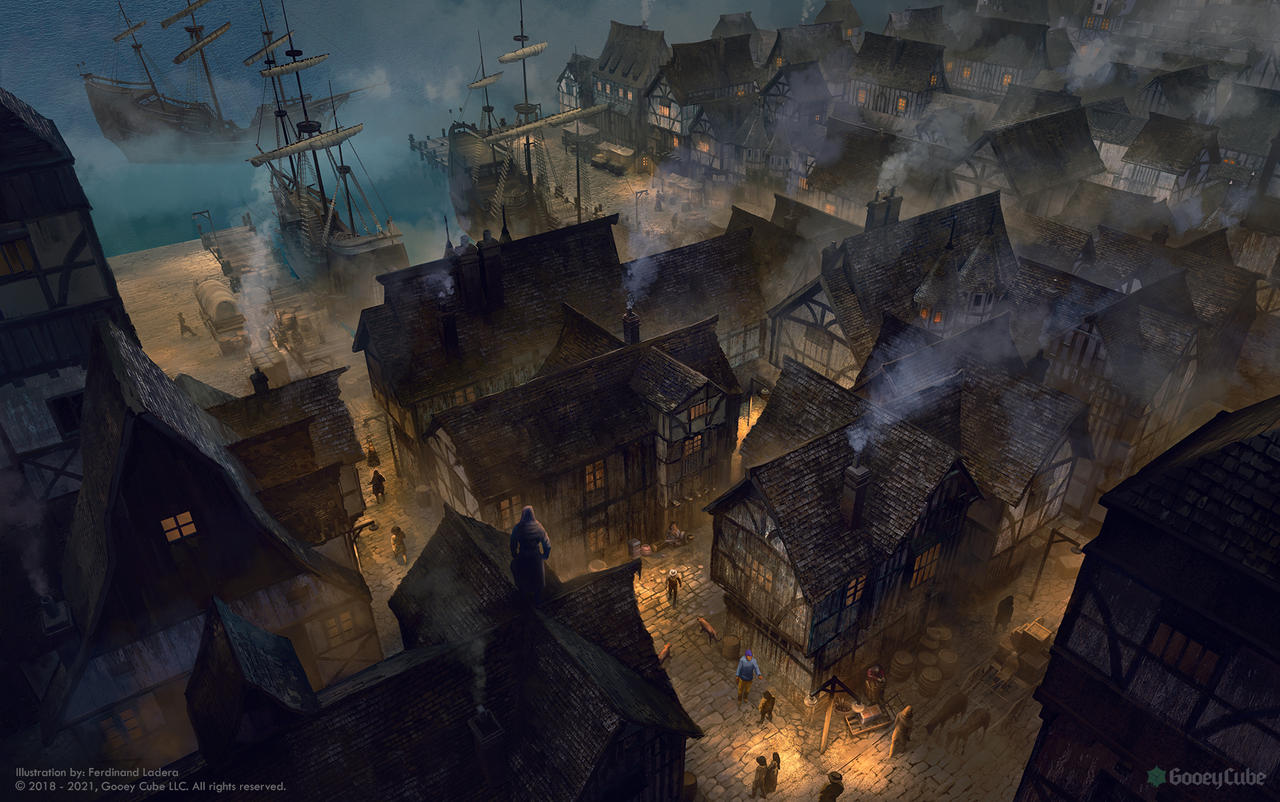In the village of Kirkuk there is the Well of the Faithful Prophet that supplies water to the village animals, which draws water from an underground grotto. There are many tombs of ancient lizardmen dotted around the grotto - the ones above ground have already been disturbed and those undead lizardmen have been destroyed, usually in brutal combat with human tomb-robbers.
What is officially said in Gaz2: Emirates of Ylaruam (p.49):
"Lizardmen Undead: Not strictly speaking NPCs, but these monsters are bad news if they start shambling out of the grotto and terrorizing villagers. The zombies are a nuisance, but the sanctuary's staff should be able to handle them. Undead lizard clerics and wizards are another matter; unless mid- or high-level magical support is available, the smartest move might be to evacuate the village, use delaying and containment tactics and wait for reinforcements.
The lizardman race itself is ancient beyond imagining - their tombs having been buried by ice sheets 4000 years ago while the Blackmoor World was in its infancy. Their descendants still survive in parts of the D&D World, though they have descended into savagery.
When awakened from the sleep of death the lizardmen are bewildered by what they find. Their swampy homeland has disappeared and been replaced by a desert populated with horrible mammals in a mockery of lizardman form. They find they are not really alive but only sustained by ancient magics, reawakened only to preserve the sanctuary of their tomb.
The lizardmen might respond in a number of ways to their reawakening:
- Perhaps they are more than content to return to the slumber of the grave, once the sanctity of their tomb is re-established
- Perhaps they struggle instinctively to destroy the alien world they discover
- Perhaps the undead lizardman clerics and sorcerers imagine they can re-establish a race of lizardmen with their Lizardskin bed."
Source
- The Serpent Folk were the leaders
- The Gatormen and Lizard Kings were the battle champions
- The Lizardfolk were the commoners and the most numerous
- The Kobolds and Humans were the peasant slaves
I am going to change the timeline a bit here. Although the quote from Gaz2 says that
The lizardman race itself is ancient beyond imagining - their tombs having been buried by ice sheets 4000 years ago while the Blackmoor World was in its infancy. Their descendants still survive in parts of the D&D World, though they have descended into savagery.
Since the current year is 1000AC (when the gazetteers are set), this means the ice sheets came in 3000BC, which is actually when the legendary Great Rain of Fire ended the Blackmoor civilization (not when Blackmoor started) and caused massive climactic upheavals. As far as this campaign is concerned, the Mogreth Empire rose about 9000 years ago (8000 BC) and fell into decline in 3900BC when humans from the Blackmoor civilization encouraged the enslaved humans of Mogreth to rise up against their reptilian masters. These humans would later form the Nithian empire.
When the Blackmoor civilization destroyed itself with the Great Rain of Fire, a brief ice age that covered the land in snow and ice for a century destroyed all the Mogreth inhabitants that remained - their reptilian bodies could not cope with the cold. Those that did not die had fled south towards the Serpent Peninsula and other warmer climes. The native humans also either moved south or died, though after the ice and snow had retreated they returned to their homeland, now free of living lizardfolk overlords. Although the human Nithians eventually overthrew their Mogreth masters, the Mogreth influence lived on in two powerful evil deities of the Nithian pantheon - the brutish crocodile god Sobek and the more cunning and insidious serpent god Apep, both closely allied with the forces of Chaos, entropy and death. Worship or ignorance of these two deities generally influenced the alignment of the lizardmen - without Apep or Sobek the lizardmen would drift towards neutrality, merely content to look after themselves rather than being footsoldiers of Chaos. It was often the serpent people, gator men and lizard kings who encouraged or demanded their followers join them in worshipping chaotic deities that pulled those lizardman tribes into chaotic behaviour.
Although Mogreth society in the Nithian river valley collapsed, there were surviving lizardfolk who battled across southern Brun until they found themselves in the jungles of the Serpent Peninsula, in between the two human cultures of Yavdlom on Thanegia Island and Ulimwengu to the north. They have established new strongholds there and have been rebuilding their strength, and are now challenging Yavdlom for control of the inland sea of Dkiki Mamazzi, attacking coastal human settlements such as Quagmire. These lizardmen of the Serpent Peninsula have some distant awareness of their history, but it has become distorted into myth and legend.
Smaller groups of lizardfolk have also found new homes in smaller swamps and marshes such as the Malpheggi swamp in southern Darokin, but these are primitive and degenerate, with no memory or written history of their glory days nor any means of recapturing their former greatness.
The most accurate records of what Mogreth was actually like now lie underneath the sands of Ylaruam, sometimes directly underneath the cursed ruins of ancient Nithia or under living Ylari settlements (such as Kirkuk). In north-central Ylaruam there are known to be three sets of Mogreth ruins near Deraan, known as Akha-Sstalzhat, Akil and Ithkesp respectively. There are also Mogreth ruins deep below Cinsa-Men-Noo, underneath the layer of ancient Nithian remains, and the Shaddranath Silver Mine, originally started by Mogreth but taken over by various other cultures over the centuries.

